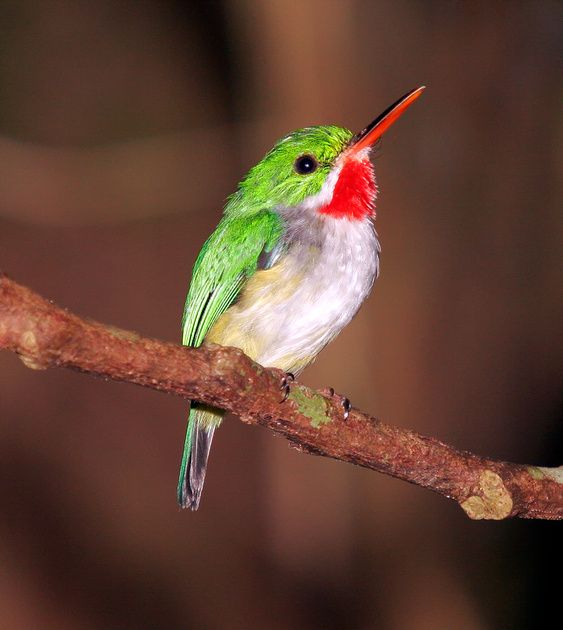The common eider (Somateria mollissima), also called St. Cuthbert’s duck or Cuddy’s duck, is a large (50–71 cm (20–28 in) in body length) sea-duck that is distributed over the northern coasts of Europe, North America and eastern Siberia. It breeds in Arctic and some northern temperate regions, but winters somewhat farther south in temperate zones, when it can form large flocks on coastal waters. It can fly at speeds up to 113 km/h (70 mph). The Common Eider is famous for the insulating quality of its down (typically harvested from nests without harming the birds). Breeding males are sharp white and black, with pistachio green accents on the neck. Females are barred with warm brown and black. Common Eiders live mainly in marine waters, usually near rocky seacoasts. For nesting, they use low-lying coastal islands, islets, and shorelines with grasses, mosses, and sometimes low shrubs or stunted trees. High Arctic tundra heath, gravel spits, krummholz (very stunted trees), and taiga all serve as nesting habitat. On some islands, they nest near small lakes, usually those close to saltwater. Young remain with females in sheltered saltwater environments with abundant marine algae. The young often group into large flocks known as crèches, During migration or when preparing (“staging”) for migration, large eider flocks sometimes use freshwater lakes and lagoons. Common Eiders typically winter in areas with rocky seafloors and strong tides, places that are generally rich in mollusks. The sedentary Hudson Bay Eider winters in polynyas (areas of open sea within the sea ice) and in cracks and leads in the ice. Common Eiders appear to be monogamous, though males will display to females other than their primary partner. Pairs sometimes reunite in consecutive seasons. During periods of calm weather in autumn, males begin to display, both singly and in groups, tossing their heads, stretching their necks, and flapping their wings while keeping up a soft cooing. Pairs often copulate during fall and winter, well outside of the nesting season. Females respond to partners with a low cawing call. Females select the nest site, usually within a large colony of their species (except “Pacific” Eider, which often nests alone) and make their famous nests of down. Common Eiders also sometimes use nests of other waterfowl or gulls. Males remain near females during much of incubation, then move to less sheltered waters to molt and feed heavily. Males seem to be less aggressive toward each other than in some duck species, though both sexes lower the head and lift the chin in threat displays. Conflicts sometimes occur between pairs nesting close together. For nesting Females typically select a site within walking distance of the sea, often reusing the site from the previous season. The nest usually features some form of cover such as rock, driftwood, or vegetation. Females make a depression in the ground using feet and belly. They line the scrape with their down only after laying their third egg. If females have to leave the nest, they often cover the eggs with the down. Nests are about 10 inches in diameter, with the interior cup about 8.5 inches across and 2.7 inches deep. Adult Common Eiders eat almost exclusively mollusks, crustaceans (such as spider crabs), echinoderms (sea urchins), marine worms, and fish eggs. In strongly tidal areas, they tend to feed more at low tides. Among their favorite foods are blue mussels, which they pry from underwater rocks with chisel-like bills. In winter, green sea urchins are important in the diet; these are usually brought to the sea surface for processing before being consumed. Small prey items are swallowed underwater. Ducklings eat some marine algae along with gastropods (such as periwinkles) and amphipods (tiny crustaceans). Nesting females eat little but often pick at smaller prey in shallows when with young. The main predators of Common Eiders are large gulls, ravens, American crows, and jaegers, which prey on the eggs and the downy young. Because they nest mostly on small islands, Common Eiders have few mammalian predators. Common Eiders are quite vocal, with males frequently giving pleasant cooing calls that can be heard far across the water on still days. Females, when feeding or responding to male courtship displays, give a low gog-gog-gog. Both sexes give a harsh grating kor-korr-korr, probably an alarm call. Here is a link so that you can listen to this bird too.

